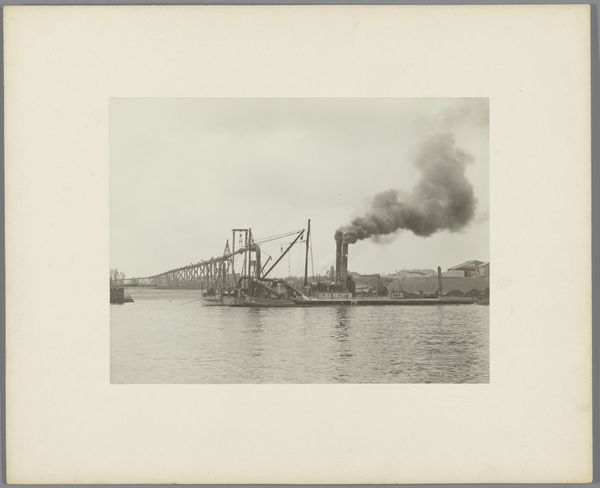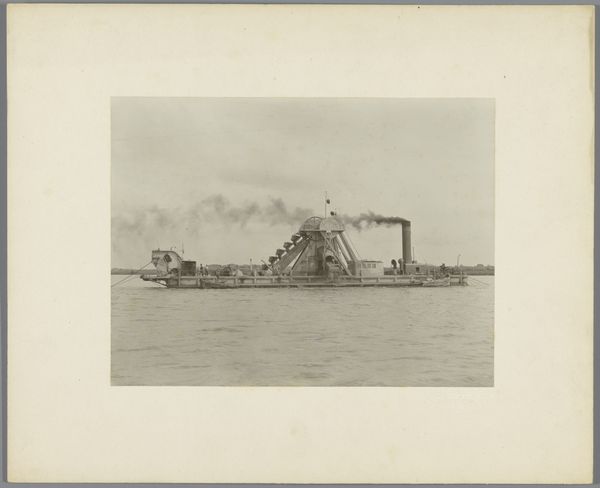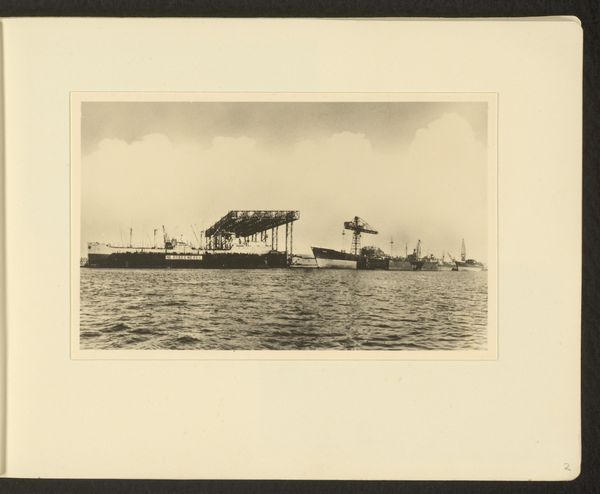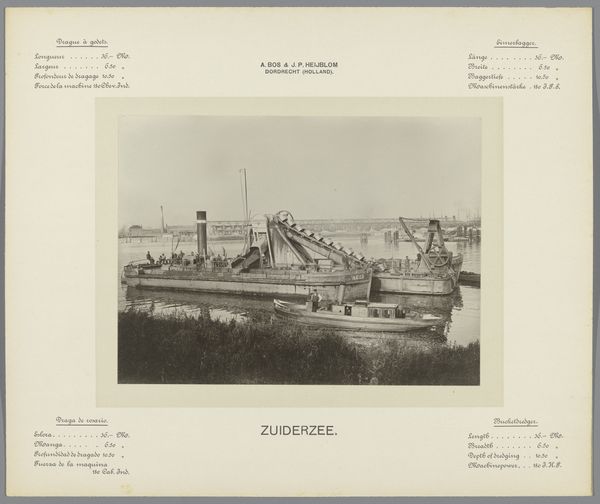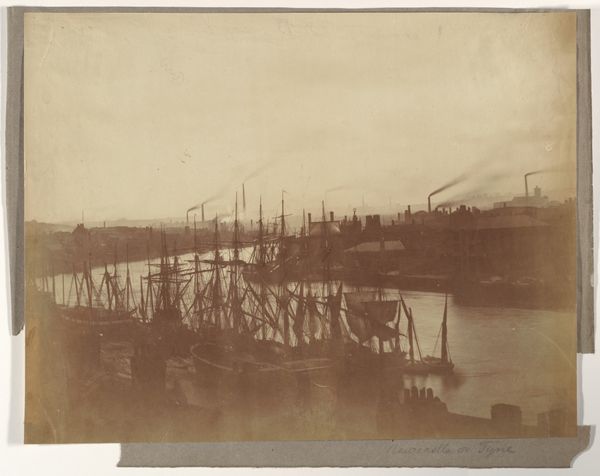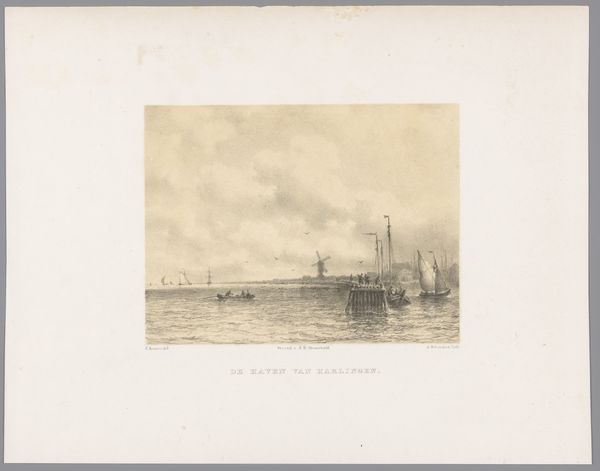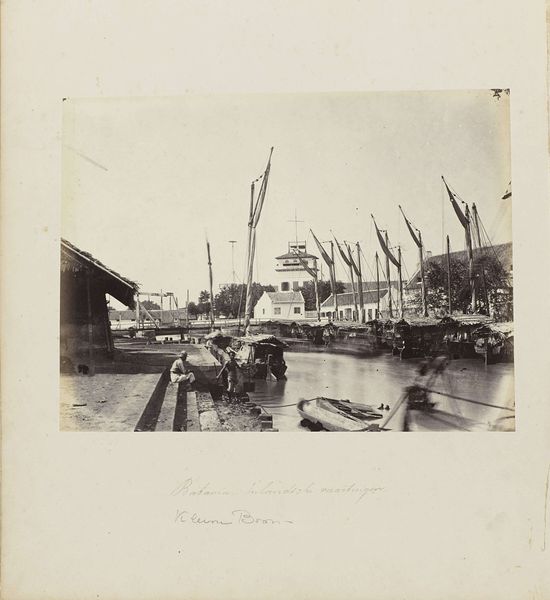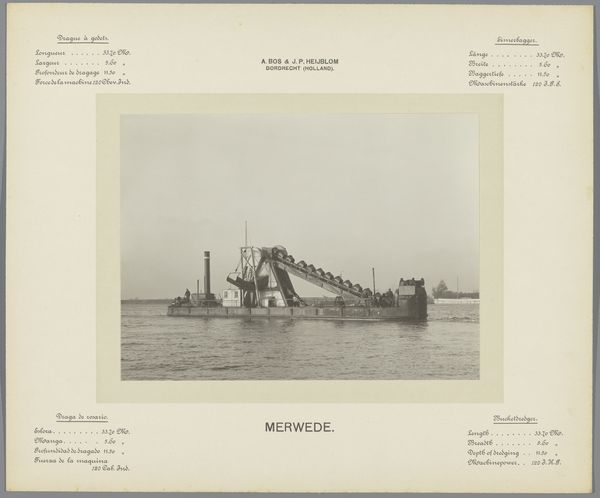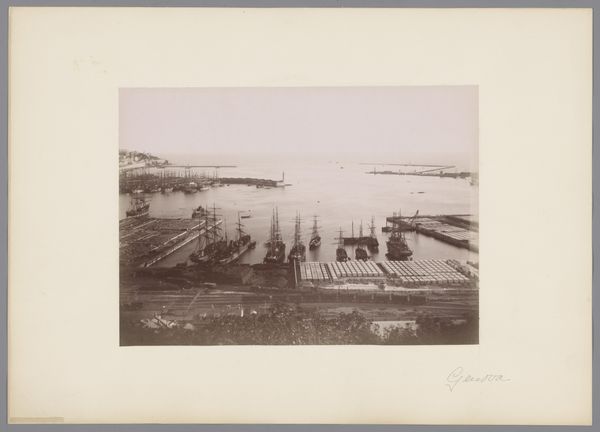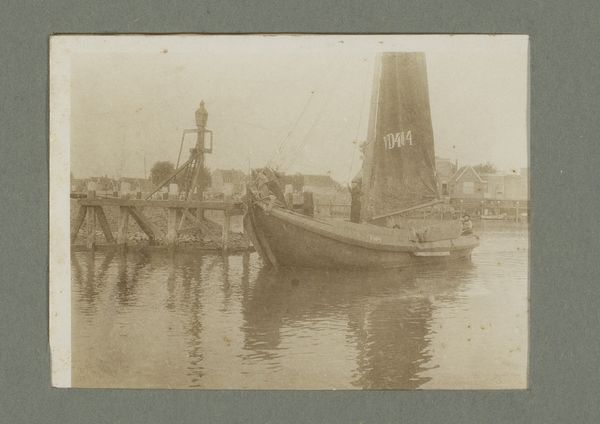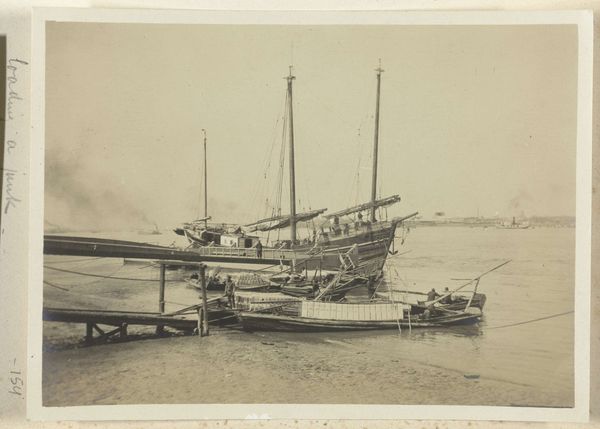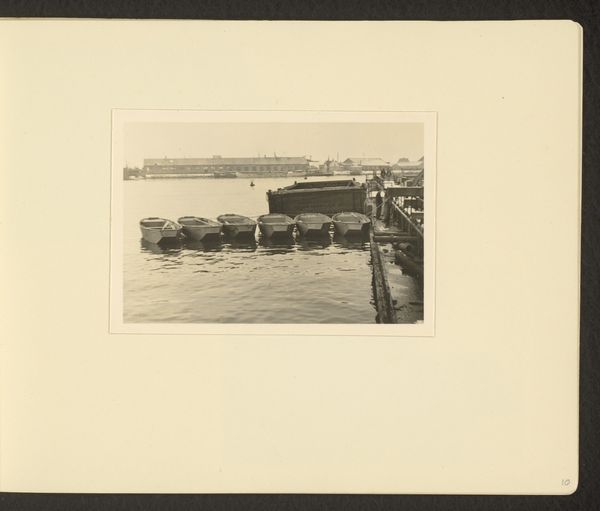
print, photography
#
still-life-photography
#
ship
# print
#
landscape
#
photography
Dimensions: height 160 mm, width 220 mm, height 284 mm, width 348 mm
Copyright: Rijks Museum: Open Domain
Curator: Let’s examine this photograph, "Bakkenzuiger Sliedrecht III" by Henricus Jacobus Tollens, taken in 1906. It’s a remarkable industrial landscape rendered in monochromatic tones. Editor: It immediately strikes me as melancholic, a kind of industrial sublime tinged with soot. The pallid sky mirroring the flat water; the grimy vessel—it feels like a visual lament for a bygone era. Curator: Precisely! The composition itself is intriguing. Notice the placement of the dredge. The artist deliberately contrasts the mechanical lines with the soft, amorphous quality of the smoke and sky. It creates a visual push and pull, a sort of...structured chaos. Editor: The ship itself, the Bakkenzuiger, looms large. Its shape suggests progress, industry and economic power, but the smoke tells a parallel story: environmental alteration. Do you think this duality, present in so many of our symbols, reflects the collective psychological landscape of the early 20th century? Curator: I agree completely. The materiality of the print also contributes to the reading; the tones, ranging from creamy whites to sooty blacks, create subtle visual interest. There's an inherent tension between the medium and the message. The hard lines and industrial subject portrayed via soft shades; photography’s intrinsic precision somehow captures an era where such clarity may not exist. Editor: And consider that for viewers in the early 20th century, images like this could symbolize a new Dutch empire over water and commerce. These watercraft, through mechanization and power, came to stand for national ambition, and a hope that progress could lead to wealth for everyone. Curator: Indeed! We’re observing not just an image, but the symbolic convergence of industrial progress and artistic expression—captured within this silver emulsion. Editor: A fascinating look at progress then and the past informing the present; I'll never see the harbor in quite the same way again.
Comments
No comments
Be the first to comment and join the conversation on the ultimate creative platform.
